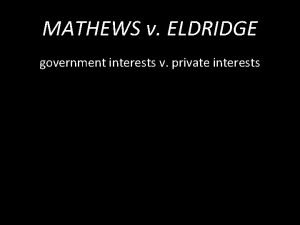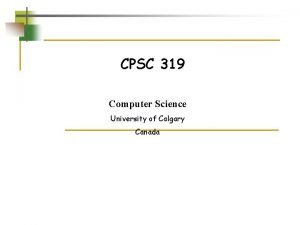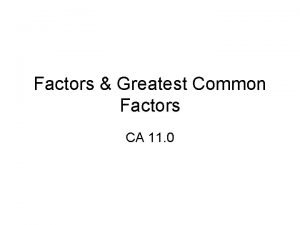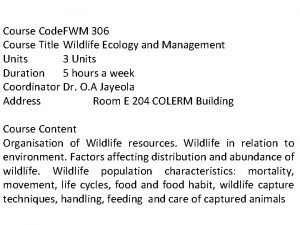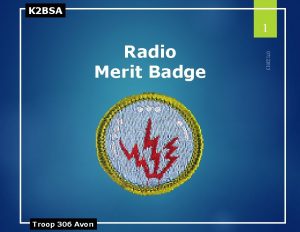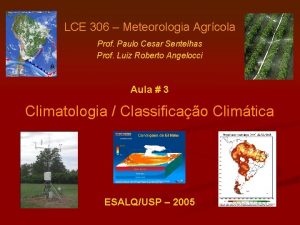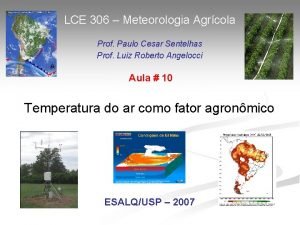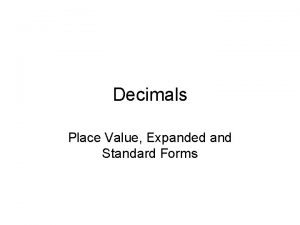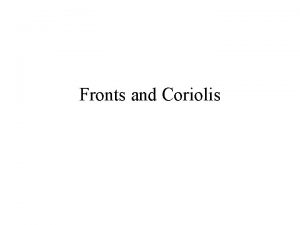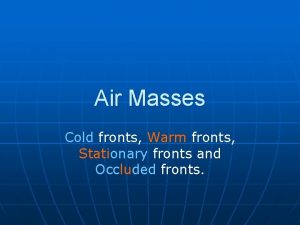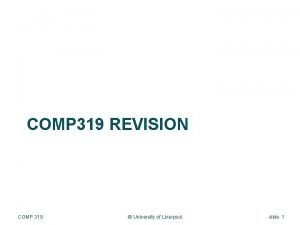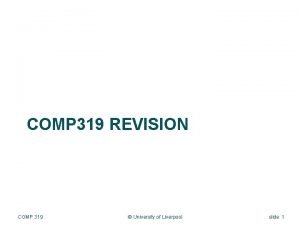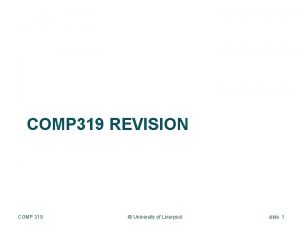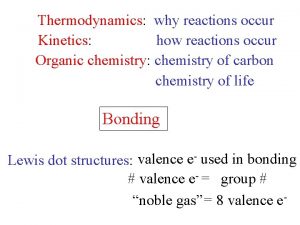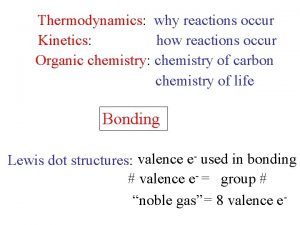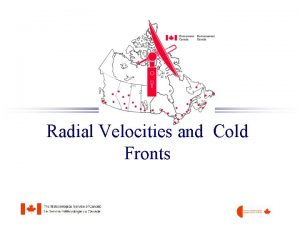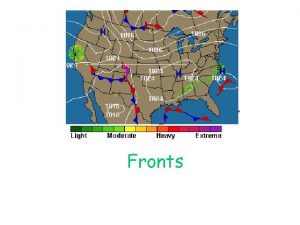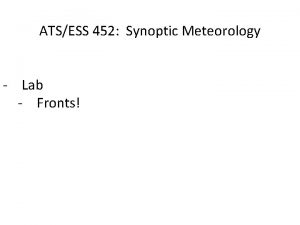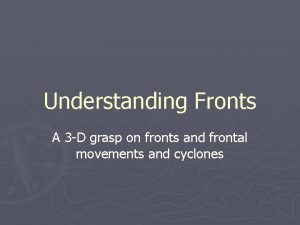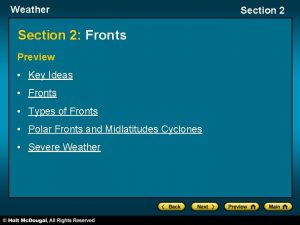FRONTS Chapter 11 pp 306 319 Fronts occur



























- Slides: 27

FRONTS (Chapter 11, pp. 306– 319)

Fronts occur in the boundary zone between polar and tropical air masses.

World War I Aerial Photograph “No man’s land” trenches


Ben Franklin’s Storm (Nov. 2, 1743) 500 mb Boston Philadelphia L L

Norwegian Cyclone Model polar/tropical air mass boundary waves form along fluid density boundaries cold front catches warm front warm air is pinched upward cold front moves faster than warm front storm dies (pp. 322– 324)

Typical Cold Front • Convective precipitation • 50– 100 mile wide band along front

Cold Front Cross-Section Cold fronts are rapidly advancing cold (dense) air wedges. Warm (often moist) air is forced upward along and ahead of the surface front.

Typical Warm Front • Clouds and precipitation precede surface front • Stratiform clouds starting about 750 miles from front • Stratiform precipitation starting about 350 miles from front “Overrunning”

Warm Front Cross-Section Warm fronts are receding cold (dense) air wedges. Warm air gradually fills in the space vacated by the cold air.

Warm Front Cross-Section WARM AIR COLD AIR


Occluded Front



OCCLUDED FRONTS • Heavy precipitation along front • Convective or stratiform • Short duration


Occluded Front Cross-Section (“Cold Occlusion”)


“Warm Occlusion”


Occluded Front Cross-Section (“Warm Occlusion”)

“Warm Occlusion”

Cold Occlusion coldest air is behind cold front Warm Occlusion coldest air is ahead of warm front

(QUASI-) STATIONARY FRONT Partly cloudy or cloudy with widespread stratiform precipitation

Cyclone Family Cold Air Warm Air (pp. 306– 319)

Quick Summary—Fronts (Chapter 11): • Fronts are boundary zones between polar and tropical air masses. • Fronts are stable—the colder, denser air is close to the surface and warmer, less dense air is above it. • Cold front weather: cumuliform clouds, showery, convective precipitation along the front. • Warm front weather: stratiform clouds and precipitation in the cold air well ahead of the front. • Occluded front weather: very heavy precipitation of short duration in the vicinity of the front.
 Air masses in north america
Air masses in north america Matthews v eldridge
Matthews v eldridge Crime prevaricação
Crime prevaricação Corrupção passiva
Corrupção passiva Excesso de exaçao
Excesso de exaçao Cpsc 319 u of c
Cpsc 319 u of c Cpsc 319 u of c
Cpsc 319 u of c Cwa 319
Cwa 319 87,539,319 = 2283 + _ _ _ 3
87,539,319 = 2283 + _ _ _ 3 Hsci 319
Hsci 319 Me 319
Me 319 Length depth
Length depth Me 319
Me 319 Pc 319
Pc 319 888-306-0905
888-306-0905 Highest common factor
Highest common factor 306 subject code
306 subject code Om306
Om306 Electromagnetic spectrum
Electromagnetic spectrum Ed 306
Ed 306 Reflexión sobre las virtudes teologales
Reflexión sobre las virtudes teologales Calomel electrode
Calomel electrode Paulo sentelhas e angelocci geadas aula lce 306
Paulo sentelhas e angelocci geadas aula lce 306 Meteorologia
Meteorologia Paulo sentelhas e angelocci geadas aula lce 306
Paulo sentelhas e angelocci geadas aula lce 306 306
306 306 in expanded form
306 in expanded form 306
306

